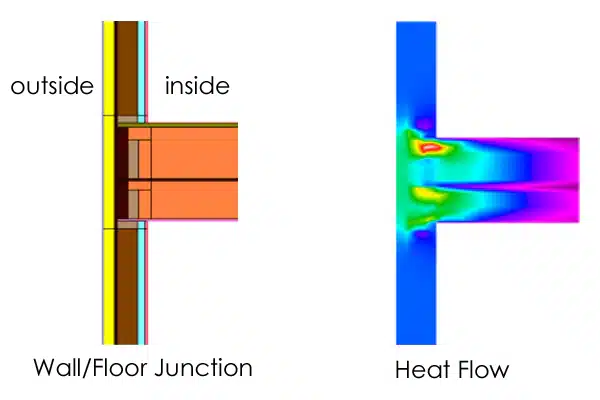SPECIFICATION GENERATOR
Find out which low impact materials are right for your building project.
How to avoid thermal bridges
Find out more about our approach to this building scenario.

Thermal bridges are relatively easy to design out but it generally involves using systems and techniques which are inherently thermal bridge free in the first place.
In solid ground floors this can most easily be achieved by using a concrete raft which ‘floats’ on a layer of insulation, normally polystyrene. The concrete raft is load bearing, so will take the load of internal and external walls to be built upon it. Whilst this is the easiest way it is not necessarily the cheapest way.
Standard masonry construction (suspended beam and block, block foundations) can achieve very low levels of bridging if detailed well but this often requires the use of insulation blocks or foam glass to prevent heat loss in to the foundations or ground. Because timber doesn’t conduct heat as much as concrete (around 1/4 of that of concrete blocks) it can be used very successfully to create floors with minimal thermal bridges. Both of these methods may be cheaper than using a raft but both are also much more difficult to make air tight.
With walls it is easier to avoid thermal bridges by using timber frames with external insulation, such as wood fibre insulation, which can then be rendered or clad. Cavity masonry can also be used to avoid thermal bridges by using full fill cavities of the appropriate width and also the correct insulating lintels over the window and door openings.
Most roof structures are made from timber which is inherently insulating but the more complex the structure is the harder it becomes to make it thermal bridge free. Again, wood fibre insulation boards can be used over the rafters to prevent thermal bridging and insulate against summer sun.
WHAT’S NEXT?
If you want to find out more about how to effectively manage your sustainable building project, check out The Self-Build Series. This series of guides has been put together to you understand sustainable construction. We hope you find them useful!